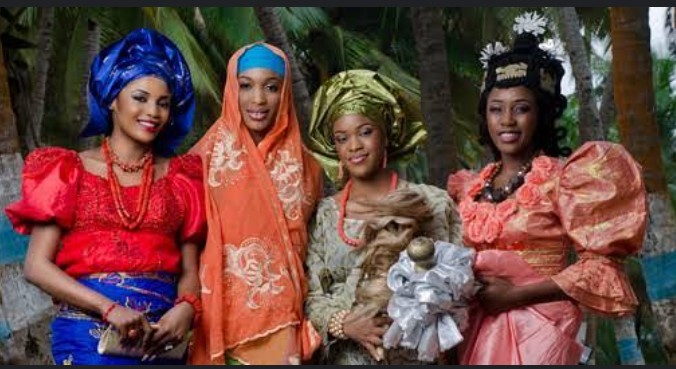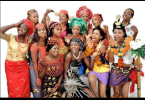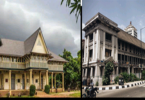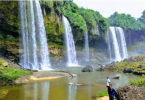The geographical entity called Nigeria is astonishingly rich and ancient in history and diversity. Nigeria’s landscape is a rich mine of resources, potential and spectacular people. We intend to examine the cultural landscape of this nation – by exploring Nigeria’s multifaceted tribes and their significance to the nation’s existence.
Nigeria proudly boasts of well over 300 ethnic groups, whose diverse origins go way back to thousands of years of migrant ancestors. These ancestors have been neighbors for centuries, who influenced the existence of one another positively and negatively without sacrificing their identity.
The Creation of Nigeria as a Nation
Nigeria became a distinct geographical entity with its own national borders under the command and arrangement of British colonization. Before then, a journalist named Flora Shaw had suggested the name ‘Nigeria’ (‘Niger-area’) in the 1890s for the whole area surrounding the River Niger. Shaw later became the wife of Frederick Lugard, a British officer.
Lugard was appointed governor of both the Northern Nigeria Protectorate and Colony, and the Protectorate of Southern Nigeria in 1912. The British government eventually delegated Sir Frederick Lugard to rule as Governor-General of the United Northern and Southern Protectorates of Nigeria. A document for the unification of the two Protectorates was signed by Lugard to that effect, in 1914.
A Quick Expose of Nigeria’s Geography
Nigeria, the largest black nation in the world, is conspicuously located in West Africa. It is situated along the coast bordering the Atlantic ocean and north of the equator; with a land area of about 923,768 square kilometers. Nigeria is surrounded by the four neighboring countries of Benin, Chad, Niger, and Cameroon.
The two largest rivers, Niger and Benue, form a ‘Y’ shape as they unite at Lokoja – located roughly at the center of the country. Subsequently, the ‘Y’ roughly splits the country into three broad zones. These zones somewhat mark the boundaries of the three largest ethnic groups in Nigeria. The Hausa (and Fulani) are located in the north, the Yoruba in the southwest, and the Igbo in the southeast.
Nigeria’s landscape is also blessed with a mix of vegetation. It progresses from the savanna in the North through rainforests, and culminates in coastal wetlands in the South.
How Nigeria’s Geography has Influenced Its Multifaceted Tribes and Cultures
With regard to constitution, the various tribes of Nigeria are distributed as follows:
Hausa & Fulani: 29 percent
Yoruba: 21 percent
Igbo: 18 percent
Ijaw: 10 percent
Kanuri: 4 percent
Ibibio: 3.5 percent
Tiv: 2.5 percent
While the remaining 12 percent is constituted by other tribes, too numerous to mention here.
Each of Nigeria’s vegetation zones have mightily influenced the cultures and lifestyles of every tribe residing therein. For instance, the Northern savannas provide fresh grass for cattle, and are ideal for cereal cultivation. These are important features of the Hausa and nomadic Fulani lifestyle. Whereas the tropical forests towards the South are ideal for growing tubers, fruits and vegetables. These are prominent foods amongst the Yoruba, Igbo and Niger Delta tribes.
While the lagoons, creeks, swamps and coastal waters provide abundant fish and salt for the people living along the coast. The Ijaw, Kalabari, Efik, Ibibio, Ilaje, Egun/Badagry and neighboring tribes live and fish within these areas. They live in small villages, and mostly build their houses on stilts.
The official language of Nigeria remains English (and rightly remains so). Indeed it would have been difficult to choose one local language as lingua franca from amongst over 300 distinct languages. However, Hausa language has the largest number of indigenous speakers, and is the official language of Northern Nigeria. Hausa is also the oldest known written language in West Africa; its origins go as far back as before 1,000 C.E. While Yoruba and Igbo languages remain the dominant languages of the southwest and southeast regions respectively.
Over the course of time, Pidgin English emerged – a rough construct of local languages (especially Yoruba and Igbo with slangs) mixed with English. Pidgin English served the uneducated and less-educated folks quite well in southern Nigeria for decades. It originated from the attempt by British sailors to communicate with local merchants along the coasts of pre-independence Nigeria. However, Pidgin English has now attained the status of a common unifying language in urban and suburban areas of the country. It has also become a recognized and well promoted language beyond the shores of Nigeria through music, arts and social media.
Nationalism Versus Ethnic Sovereignty in Nigeria
The brand of nationalism practiced in Nigeria has been severely impacted by the yearning of each tribe to retain its tribal identity. Most of these ethnic groups evolved with separate origins and histories, but have had to cohabit over many centuries. Tribal sentiments and distrust have arisen over the years. Lands, resources and rights have been infringed upon by neighbors. And wars have been fought.
The Nigerian Civil War (1967 to 1969) was a testament to the problem of strong ethnic bias and distrust in Nigeria. Similarly the Biafra movement that led to the war persists till this day. It is a strong reminder that the wounds of tribalism have not yet been healed. The situation also manifested as a brand of politics and governance that is often ethnically-biased.
Nevertheless, the increased drive for higher education and urbanization has brought several ethnic groups together over the years. It became imperative for Nigeria’s multifaceted tribes to learn to work and live together, and find a common purpose. Ethnic clashes and political squabbles in recent times clearly show that the tribal divide is still in existence. But the need for interethnic teamwork is becoming more pronounced; and is still an ongoing project.








